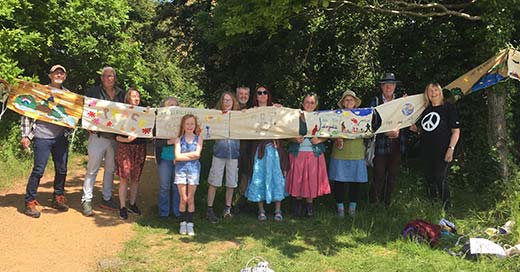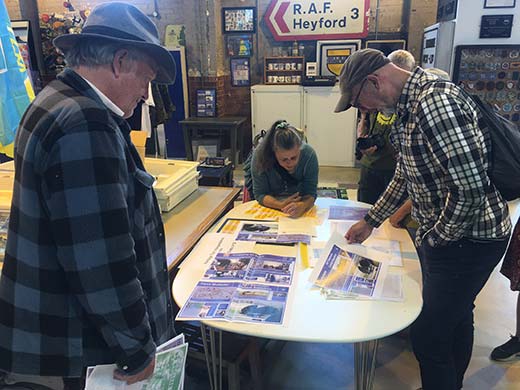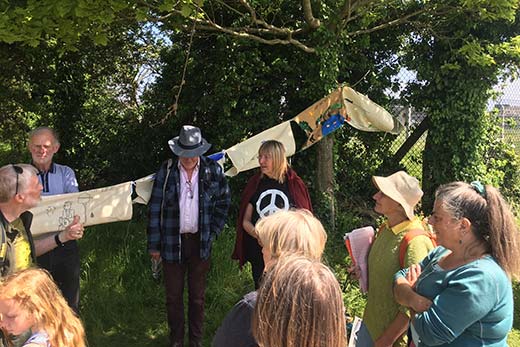Upper Heyford Peace Blockade: 40 year reunion
Wednesday, 14 June 2023
A recent reunion of anti-nuclear protesters marked the anniversary of one of UK's largest ever civil disobedience events (752 arrests). Coachloads from Hebden Bridge and the Calder Valley joined the protests.

Between the 31st May and June 3rd 1983 one of the largest ever set piece civil disobedience demonstrations took place at USAF Upper Heyford in Oxfordshire. This was then home to eight F-111 planes armed with live nuclear weapon always on standby in what was called a Quick Response Area. It was the height of the Cold War, fears about a possible nuclear conflict were growing across the globe and Upper Heyford was on the "front line" for those who wanted a world without weapons of mass destruction.

Organisers and supporters revisited Upper Heyford on Saturday 3 June where they held a meeting at the site of the Peace Camp (on Portway, Camp Road), which was set up in 1982 inspired by the women's camp at Greenham Common. They then walked to the Heritage Centre, within the perimeter of what was the airfield, where there are soon to be two new display panels with information about the blockade and other protests.
More than 5,000 people took part in the "peace blockade" in six regional shifts over four days. It was entirely peaceful. At its conclusion, 752 people had been arrested – one of the highest numbers of people ever detained at a peace protest. The airbase has since been mothballed – USAF Lakenheath being the preferred F-111 base in the 1990s following the 1987 Intermediate-Range Nuclear Forces (INF) Treaty after which the 'peace dividend' meant one of the two were to be shut.

Hebden Bridge's Steve Barwick, one of the founders of the Peace Camp and one of the organisers of the four day peace blockade, said, "The spirit of idealism and protest, which the Upper Heyford Peace Camp represented, and its message that peace is always the preferable option, is still relevant forty years later.
With recent nuclear sabre rattling by Vladimir Putin, nuclear rearmament taking place across all five Nuclear Weapons States and the Doomsday Clock advancing to 90 seconds to midnight, it is vital that voices for peace are raised again. Russia should stop its aggression against Ukraine and the world should then get back on the path to nuclear disarmament, rather than its current course which is towards nuclear rearmament."
Nuala Young, a strong supporter of the camp and current Secretary of Oxford CND, added, "The EF-111 planes that we opposed at Upper Heyford helped escort the nuclear armed F-111s under "enemy" radar. They presented a real risk to global security, especially when one plane got as far as the East German border due to a computer mistake. The new F-35 planes being brought to Lakenheath pose once again a great threat as their warheads are designed to take small "usable" nuclear weapons. Once again, the spectre of a limited war in Europe, that so raised our concerns in the eighties, has become more likely."
Adrian Sinclair, a student in Oxford in 1983 who helped organise the four day peace blockade, also said, "Looking back it is remarkable how much was achieved by so few people. The peace camp was forever organising protests – not just marches and blockades but vigils, occupations, and even prayer meetings. Fear about a nuclear conflict were genuine, and rising, and people felt they had to do something to stop nuclear Armageddon. It is clear now the peace movement in the 1980s, and events such as the four day peace blockade, changed the climate of opinion and did help usher in an era of global nuclear disarmament which sadly is now being reversed. I am glad I played my part."
Links
BBC Oxford piece - listen now
Oxford Mail Report

